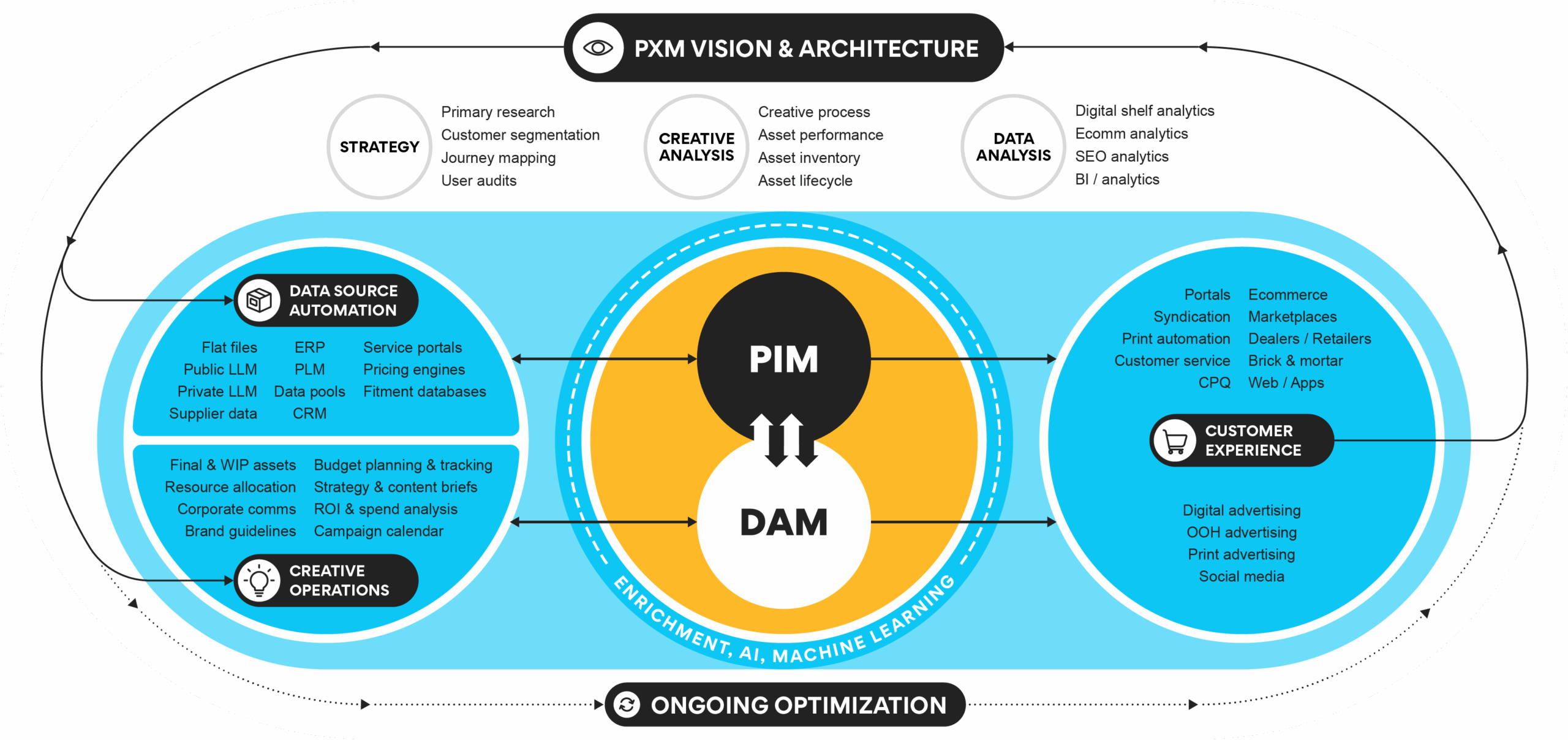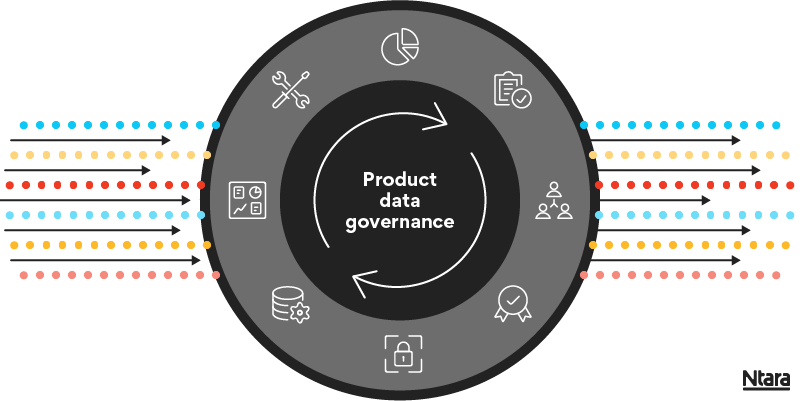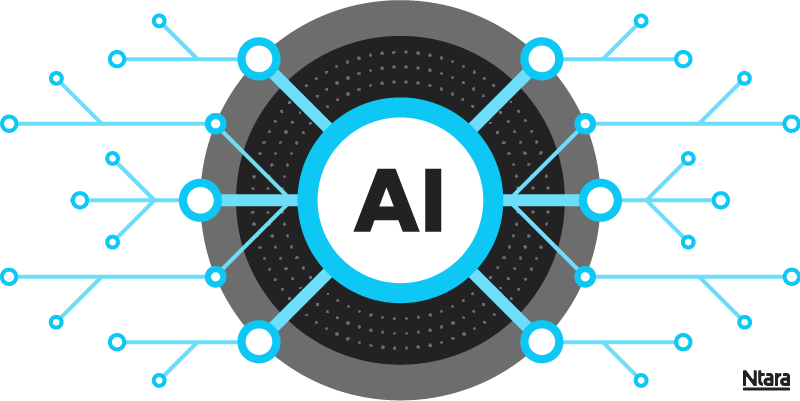Manufacturers face relentless pressure to deliver more data, faster, to more channels, with less friction. The promise of AI looms large, including personalization, automation, and agentic commerce. But for many, the reality is messier. Foundational data work is lagging, and scaling feels out of reach.
This PIMtalk webinar brought together three voices at the heart of this challenge:
Joakim Gavelin, Senior Principal Advisor at Inriver
Andy Didyk, CEO at Ntara
Whitney Snoops, Director, Digital Marketing & Technology at DAP
Their conversation revealed the leadership and mindset shifts required to move from manual, fragmented processes to scalable, future-ready operations.
The data debt dilemma (and why AI needs clean inputs)
DAP’s story is familiar to many manufacturers. Years of growth brought a patchwork of systems, connectors, and “Band-Aid” fixes.
“It was a bit of a mess,” Whitney admitted.
The team faced classic tech debt: legacy systems, manual tasks, and a constant need to pivot. The breakthrough wasn’t just technical; it was about simplification. By getting back to basics and cleaning up code, DAP built a clean baseline. Only then could they scale, syndicate, and get buy-in across the organization.
Ntara’s PXM framework starts here: foundational data is the bedrock for every digital initiative. AI can only deliver value if it’s fed clean, authoritative product data. Otherwise, it amplifies confusion rather than clarity. The lesson here is straightforward: Before chasing AI, invest in data and product software infrastructure that makes AI possible.

The human factor in AI success
Digital transformation is never just about the tool. “Any digital transformation project I’ve been a part of, it really comes down to internal leadership,” Andy said. The most successful PIM and PXM implementations improve the experience for end users and internal teams alike.
Here’s Ntara’s philosophy: Technology is an enabler, but leadership is the driver. AI can automate, recommend, and personalize, but only if leaders set clear priorities, communicate the “why,” and build confidence in the data and systems. DAP’s progress was driven by transparency and a shared vision—all critical ingredients for scaling with AI.
Data governance: The unsexy secret to AI readiness
Documentation and governance aren’t glamorous, but they’re essential. DAP’s journey required technical fixes and robust documentation around why decisions were made, how data models were built, and which historical context mattered. This clarity enabled faster onboarding and smoother integrations. It’s given DAP the ability to adapt as the business evolves.

Product data governance is a continuous process. AI thrives on consistency and traceability; without governance, even the best algorithms can’t deliver reliable results.
In this session, Andy noted that AI is already helping some manufacturers automate documentation, making governance more efficient and consistent—but only if the groundwork is solid.
Scaling starts with a proper foundation of data
The temptation to run fast is strong, whether launching new integrations, adding channels, or implementing new AI processes. But as Whitney shared, “Let’s focus on a couple of things, get it right, do it well, have a solid foundation, and build from there.”
For DAP, this meant prioritizing foundational data and streamlining processes. It meant ensuring every team member understood the priorities. Only then could they scale confidently, without constant backtracking to fix what was missed.

PXM connects the dots from clean data to syndication, governance, and AI-driven experiences. It isn’t just about managing product data. It’s about orchestrating the entire product experience so AI has what it needs to personalize, automate, and optimize at scale.
AI: The next frontier (if your data is ready)
AI is transforming commerce, but it’s not a shortcut. Agentic commerce—where AI agents interact with product data to deliver hyper-personalized experiences—demands clean, authoritative data. If you’ve got data that’s different in different places, how does AI know which one is the authority? The more structured and unified your data, the more effective your AI-driven experiences will be.

We still need humans, subject matter experts, to leverage AI,” said Whitney. “There’s a balance to be found, and it all starts with data quality and consistency.”
To summarize: AI is a multiplier, not a magic wand. It can only amplify what’s already working.
ROI is measured differently for every manufacturer
Everyone on the PIMtalk panel agreed: ROI from PIM and PXM is real, but it looks different for every business. For some, it’s freeing up thousands of person-hours. For others, it’s launching new channels or reducing returns. The key to ROI is defining what matters most to your business, measuring it from the start, and adapting your approach as you scale.
AI can help surface insights, automate processes, and drive efficiency, but only if the foundational work is done. Start with the basics, measure what matters, and let AI accelerate your progress.
Watch the PIMtalk webinar replay
Manufacturers are at a crossroads. The pressure to scale, adopt AI, and deliver seamless experiences is only increasing. And the path forward is all about building a solid foundation, backed by strong governance and leadership.
DAP’s journey shows what’s possible when you get the basics right. It also shows how Ntara’s PXM framework can help you scale with confidence.
Ready to see how leading manufacturers are tackling these challenges? Watch the replay of the Inriver PIMtalk session for more insights and practical strategies.